Nickel Contact Dermatitis Summit Webinar
Nickel Contact Dermatitis Summit
For 53 years, nickel has been unparalleled as the most common allergen documented in patch-tested patients of all ages worldwide, which we call attention to as the Nickel Contact Dermatitis Summit approaches. And yet, nickel sensitivity is a much wider problem than the documentation suggests, as Peltonen alarmingly and poignantly pointed out over 30 years ago: “half of the subjects sensitized to nickel have never consulted a doctor because of their nickel dermatitis; still fewer have visited a dermatologist”. In the US we are in the midst of a prospering hidden nickel epidemic akin to that seen in Europe prior to nickel regulation legislation. There are millions of adults and children sensitized each year – the rates are UNACCEPTABLE, because this is a PREVENTABLE cause of allergic contact dermatitis. The Nickel Summit webinar by Dr. Jennifer Chen discusses the impact of nickel allergy in the US and the lack of regulation.
Article Synopsis
Below is a summary of an article speaking more to this topic.
Synopsis by Janna Vassantachart, MD Loma Linda University School of Medicine
Article: Goldenberg A, Vassantachart J, Lin EJ, Lampel HP, Jacob SE. Nickel Allergy in US Adults-A 53-Year Review of Indexed Cases. Dermatitis. 2015 Jul 14.
For 53 years, nickel has been unparalleled as the most common allergen documented in patch-tested US patients of all ages. In 1994, the European Union (EU) decreased rates of sensitization by enacting a Nickel Directive to regulate nickel release to no more than 0.5 µg/cm2/week. No such directive currently exists in the USA.
This study conducted a literature review of peer-reviewed adult nickel dermatitis cases published within the United States to identify trends over the past decades, sources of nickel sensitization, and regional variations. It highlights the problem we are encountering at the top of the nickel contact dermatitis summit. The results of the study demonstrated:
- Between 1962 and 2015, there were 74 articles published reporting 18,251 cases of nickel sensitivity in US adults.
- Over the past decades, the frequency of published articles on nickel sensitivity has continuously increased with a significant correlation (r = 0.798, P = 0.057). Compared to only one article published between 1960 and 1970, in the last 5 years, 30 articles have been published.
- Five articles reported occupational exposures such as a stethoscope, chalk, and a military-issued lanyard chain from an identification neck tag (aka ‘‘dog tag’’). The most commonly reported nonoccupational sources were Essure contraceptive microinserts and Amplatzer septal occluders for atrial septal defects.
- Geographically, 27 US states have had at least 1 reported case of adult nickel dermatitis.
Most nickel dermatitis cases seen clinically are neither patch-tested nor captured in the literature, allowing for a prospering hidden nickel epidemic towards the nickel summit. However, this study reveals that even the literature has seen a significant increase in published cases over the past decades. Rising rates of US nickel ACD highlight the need for medical professionals, legislators, and manufacturers to advocate for an EU-like Nickel Directive to regulate the release of free nickel.

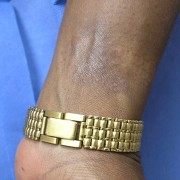
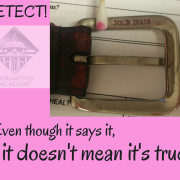
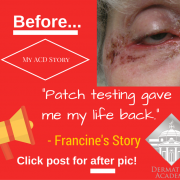
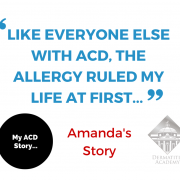
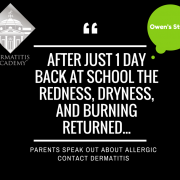
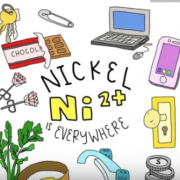
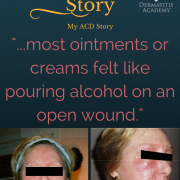



I have severe SNAS…..am concerned that part of my sensitization to nickel included my many exposures to medical needles and IV catheters…I have discovered these items often contain 8-12% nickel…..despite this NOT being labeled on the boxes. Even my doctors were unaware. I have even found legitimate medical studies which indicate that nickel in these items CAN potentially cause reactions in severely sensitized SNAS patients. However, despite this information, I have been unable to locate any USA supplier of “nickel tested or nickel free” medical supplies…. I am not sure of the status of this issue is overseas…given my severe symptoms, I am loathe to take a chance, would prefer to get a needle?IV with no nickel. I also have cobalt allergy, and I understand that cobalt CAN be found INSIDE other metals such as titanium…so not sure how to proceed if I ever need metal contact in an medical or orthopedic situation.
My nickel exposure history includes SIX years of Botox injections in my face and scalp every three months…..to prevent migraines….to this day, although I discontinued the Botox, the “herald” spots will reactivate with any subsequent exposures. At this point nothing is actually touching these spots to cause the current reactions. They seem to have “memory” and I wonder if this skin will ever be clear?
I am worried about nickel and cobalt in my MacBook Pro and ipone. Apple admits these are in their products, but not how much.There have been numerous reports of rashes due to tech devices. I use a plastic case, never sit with it ON me….I use speaker phone as the phone gave my cheek a rash. I now also wear non latex blue hospital gloves when online. I have no desktop or even a TV, so I am on my laptop a LOT….are the blue gloves sufficient????? I also wear fabric arm sleeves so no skin touches the laptop.
Also consider the potential nickel content in your TAP WATER….heat and moisture from a HOT shower will only allow your skin to absorb more allergens. Therefore a hot bath here in my tap water (supplied by old metal pipes which leach into the water) could be a disaster for me. Do not rely on the municipal water report….their water may be clean, but YOUR water in side YOUR building may be contaminated with nickel, lead, etc. I found a local lab to test for $18. I now only shower and use distilled water for cooking or washing my face. My add on shower head filter only gets out chlorine NOT lead or nickel…you need a WHOLE HOUSE REVERSE OSMOSIS FILTER to keep ALL your tap water safe. For me this is out of reach as I am a renter.
Right now there is a lack of NICKEL TESTED brands of makeup here in USA.shipping from Italy is $$$…even Sephora does not carry any of these brands…..with MILLIONS of Americans with at LEAST a contact allergy to nickel, this seems to be low priority. My belief is that this is a HUGE untapped market! Someone should do something with this……millions of American women suffer eye area eczema due to diagnosed nickel contact allergy. It is a growing and untapped market.
Thanks! Please post any opportunities to participate in research worldwide. My SNAS is severe and I offer myself to any trial or experiment I can qualify for. There seems to be NO research ongoing in WA state…will travel. Just want to get help and help others I also have gold and cobalt allergies among others….quality of life is abyssal, so why not?
I have known I had a nickel allergy for a long time.
I keep the back of my watch coated with several coats of clear nail polish.
I have made pads of thick fabric and sewn it behind the metal buttons on my jeans.
My dermatologist has put me on the low nickel diet and I’m just getting started.
What is really holding me up is I can’t find the serving sizes used in the
“Low-Nickel Diet Scoring System for Systemic Nickel Allergy”. For instance,
bread is listed as one point, so is each slice of bread 1 point? Bacon is
listed as one point, so is each slice of bacon one point? That would make a
skimpy BLT 5 points without the Lettuce or Tomato. I have to get the nickel
level as low as possible. I can’t continue high doses of Prednisone.
Does anyone know what the “portion” sizes or “serving” sizes were used in the
formation of this diet? Any help will be appreciated.
Here you go:
Click on the pictures – it has serving size:
https://www.dermatitisacademy.com/nickel-page/low-nickel-diet-guide/